Lisa Walker's Blog, page 7
November 9, 2013
Pool to Pond – how I learnt to stop fighting nature
About ten months ago I read an article about turning pools into ponds. It had a picture of someone plunging into lily-bedecked water. ‘We should do that!’ I said.
We weren’t good at pool maintenance — ours was never a sparkling blue expanse. Each summer it was a battle to keep the pool looking reasonable — running the pump, hauling chlorine up our 100 steps, scooping the leaves that fell from the overhanging branches. And it didn’t even get all that much use. The beach is only five minutes’ walk away.
I’m not the domestic type – I’ve never had much interest in house or garden, but the ‘pool to pond’ became my pet project. It made perfect sense. The amount of effort, chemicals and power required to keep our pool functioning showed that nature had other plans.
I am obviously a pagan at heart.
So we stopped running the pump and putting chlorine in. It turned green and smelly. At this stage we had doubts. But one month later I spotted a swimming insect in the pool. This was, I had heard, a signal that the pond was safe for life.
My son and I went out and bought a goldfish and released it into the murky water. Anti-climactically, it vanished instantly and remained out of sight for many days. We named it Scott, after Scott of the Antarctic, because it bravely went where no fish had been before.
Next, we bought some water plants – reeds which rested on the top step and lilies for the lower step. The water was still murky, but with the addition of plants at least it looked like it was intended that way.
A week or so later, we discovered Scott, lurking in the pool filter area. He was still alive, so we bought ten more fish. As we put them in Scott came out of hiding and joined the gang as they patrolled their new home. He’d just been waiting for some company.
Ten months down the track, the water is so clear we can see to the bottom and the fish have doubled in size. They must be happy in their home as tiny baby goldfish now swim with the pack. They are all practically oblivious when we put on goggles and swim gently through the lilies, lingering close enough to touch.
Several times a day I wander out and gaze at the calming sight of fish darting through the lilies. And I don’t know why we didn’t do this years ago.
For the full pond immersion experience click below or here.


October 31, 2013
Vivid and sensual – The Pagoda Tree by Claire Scobie
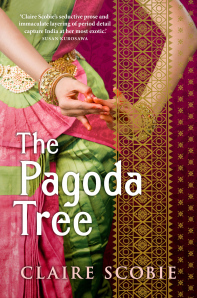 The Pagoda Tree is the first novel by journalist Claire Scobie, whose previous book was a travel memoir, Last Seen in Lhasa. Here, Scobie turns her gaze from Tibet to India.
The Pagoda Tree is the first novel by journalist Claire Scobie, whose previous book was a travel memoir, Last Seen in Lhasa. Here, Scobie turns her gaze from Tibet to India.
The novel is set in 1765 and is the story of Maya, who is destined from birth to become an Indian temple dancer or devadasi. Scobie’s inspiration to write the book came from a visit to a temple in Southern India. Here she saw the names of 400 dancing girls engraved upon the 11th century walls. From this starting point grew Maya’s story.
Highly trained in dancing, music and love-making, the temple dancers were married to the God Shiva and often became courtesans of powerful men. Devadasis had a level of control over their lives not given to other Indian women and were the only women taught to read and write at the time.
Mentored by Palani, a powerful devadasi, Maya becomes a dancer of rare beauty and skill. But while she is destined to be given to the prince, the turbulent times cast her adrift. Set during the British colonial era, the book shows the effect of the occupation on Indian traditions.
Maya’s dancing captivates the Europeans as well as the Indians. In Madras she forms a risky liaison with a young British trader. This clash of cultures drives the story. Her lover, Thomas, is torn between his desire for Maya and his ‘true life’ waiting for him back in England. His choice is complicated by the birth of their daughter, a girl with no status in either culture.
This carefully researched novel provides an insight into Indian culture. The title of the story refers not only to a temple but also to a common expression among the British of the time. ‘Shaking the pagoda tree’ was a term for making quick, easy money. The cruelty of some of the British colonial practices forms a backdrop to Maya’s story.
Scobie says that researching the story was hard due to the lack of historical records about the dancing girls. In writing The Pagoda Tree she sought to bring their untold story to life. This is a vividly told and sensual novel which will be especially enjoyed by those with an interest in India.
For those in the Byron area, Claire Scobie is conducting a workshop on travel writing in Byron Bay on the 7th of December. See www.nrwc.org.au
My blog seems to have become strangely popular in Mauritius and Trinidad and Tobago of late. So if you’re reading this from there – a big hello to you! I’m glad to be getting to some exotic locations, if only in spirit.


October 2, 2013
Schoolyard politics – my review of ‘The Hive’ by Gill Hornby
The Hive is the debut novel by Gill Hornby who, incidentally, is the sister of best selling British novelist Nick Hornby. It comes much-hyped as the subject of a fierce bidding war between publishers. The novel’s name is a reference to a bee hive and the story is driven by the doings of the mothers of St Ambrose Primary School who are ruled by their aptly named queen, Bea.
The action is divided up into school terms and centers around the fundraising activities for a new school library. Bitchiness, infighting and power plays abound, heightened by the arrival of a potential new contender for queen bee. The daily gatherings at the school gate are an opportunity to discover who’s in and who’s out of Bea’s favour. Didn’t get a text inviting you to morning Pilates? Well, sorry dear, you’re out. If it sounds like Mean Girls for adults, that’s because it is. Hornby based the book on the same advice manual, Queen Bees and Wannabes, which inspired that movie.
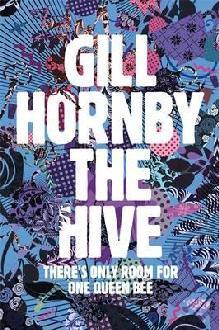 While The Hive was amusing, there were so many characters that none of them really developed much depth. Rachel has been unceremoniously dumped as Bea’s best friend. Heather is working hard to access the inner circle. Bubba is on a career break from a big job in the city, and on it goes. While Rachel was the main point of view character, I didn’t find her especially likable or interesting, so that detracted somewhat from the book’s appeal.
While The Hive was amusing, there were so many characters that none of them really developed much depth. Rachel has been unceremoniously dumped as Bea’s best friend. Heather is working hard to access the inner circle. Bubba is on a career break from a big job in the city, and on it goes. While Rachel was the main point of view character, I didn’t find her especially likable or interesting, so that detracted somewhat from the book’s appeal.
Nonetheless, a car boot sale, a disastrous ball, a quiz night and a series of fundraising lunches offer entertaining vignettes of the women in action. I especially enjoyed the minutes of the fundraising committee meetings. They were enough to scare anyone off joining a P and C. Darker notes are struck when suicide and cancer enter the story but due to lack of engagement with the characters they fall a little flat. A spunky new school principal sets the cat among the pigeons and provides a romantic interest.
Overall, The Hive seems somehow less than the sum of its parts. It was a lightweight and enjoyable social comedy that had a lot of potential, but for me didn’t quite hit the mark. Still, those with an interest in schoolyard politics will certainly find something to enjoy.


August 28, 2013
What’s that Freud guy doing in my book?
 I’ve been asked quite a few times about the quotes from Sigmund Freud which start each chapter in ‘Sex, Lies and Bonsai’ so finally, at the urging of the lovely Kate Belle I have decided to share.
I’ve been asked quite a few times about the quotes from Sigmund Freud which start each chapter in ‘Sex, Lies and Bonsai’ so finally, at the urging of the lovely Kate Belle I have decided to share.
‘Sex, Lies and Bonsai’ is all about sex, love and intimacy. For me, the process of writing it was not only one of telling a story, but of meditating on these themes and what they mean. I wanted to explain in psychological terms, but in a subtle and humorous way, why Edie acts the way she does. Why does she feel so heartbroken at the beginning? Why does she feel like a failure? Why does she fall so deeply in lust with Professor Brownlow? And why, when she eventually falls in love, is it so obviously right for her?
Giving Edie her best friend Sally who is a psychologist of sorts was a way for me to explore these themes in a fictional way. And when I researched (Googled) sex, love and intimacy all roads led to Freud. Although he was sometimes a bit of a crackpot, the impact of his radical theories on childhood, sexuality and relationships are still with us today.
Initially I put my research into the story in the form of university essays on Freud from Sally. Sadly, in the editing process it became obvious that this wasn’t working. So, in order to keep this theme going I introduced the little Freud quotes.
It soon became apparent that Freud and I were on a similar wavelength. For every chapter in the book, he had something totally appropriate to say. I never had to try too hard to find a relevant quotation. Take ‘One is very crazy when in love’ (chapter 2); Love and work…work and love, that’s all there is (chapter 4) and ‘Everywhere I go; I find a poet has been there before me’ (chapter 11). Absolutely perfect!
I’m sure many readers just skim over the quotes and that’s totally fine, but for me they are the frame for the story and an extra little layer to ponder. For those who are so inclined. You can check out ‘Sex, Lies and Bonsai’ in this preview.


August 22, 2013
From silence to enlightenment – ‘Sex, Drugs and Meditation’ by Mary-Lou Stephens
 ‘Sex, Drugs and Meditation’ is ABC radio journalist Mary-Lou Stephens’ first book. Her memoir has an unusual structure. A ten-day silent meditation retreat provides the frame and the backdrop to her story.
‘Sex, Drugs and Meditation’ is ABC radio journalist Mary-Lou Stephens’ first book. Her memoir has an unusual structure. A ten-day silent meditation retreat provides the frame and the backdrop to her story.
Mary-Lou’s decision to take the retreat is driven by a re-structure at the radio station where she works. Enter Elliott Purvis, her sociopathic boss. While radio has given Mary-Lou a haven and a purpose, she realises she may have to abandon it. Can she find a way within herself to deal with Purvis’s intimidation and bullying? Hence the silent retreat. For a woman who makes her living from talking, this is a challenge indeed. But the author has demons that she must confront as middle-age approaches.
Throughout the ten days that Mary-Lou meditates, in a range of agonising positions, her mind, and the story, flashes back to different scenes in her life. Her childhood was fraught with unpredictability. As the youngest of six children with an obsessively religious mother, Mary-Lou had to fight for attention. Her ongoing addictions to food, alcohol and drugs stem from these early beginnings.
The story charts Mary-Lou’s journey from actor to singer to radio host and the different addictions that plague this path. It follows her through a number of twelve step programs and the realisation, during the ten days, that she needs to let go of her anger and grief around a man in her past.
‘Sex, Drugs and Meditation’ is both humorous and moving. Mary-Lou’s deductions about her fellow meditators, fuelled by the silence, are found to be way off mark. Her observations on her own contortions – both mental and physical – and the ways people survive the retreat are often wryly funny.
While I’m not sure that I’ll be rushing along to the next Vipassana retreat, I found Mary-Lou’s account honest, entertaining and, in the end, uplifting. This book will strongly resonate with anyone who has experienced addiction. The message is clear and hopeful – people can change. I hear a sequel is in the wings, so stay tuned.
This is my eighth review for the Australian Women Writers Challenge 2013.


August 7, 2013
Hanging on to the glow – three days of peace, love and words in Byron Bay
Well another Byron Bay Writers Festival has come and gone, but the glow lingers. Something magical happens when you get a bunch of writers and readers together. As the smart and funny David Astle said (see video) it was like we were all part of a giant Jamboree of people who cared about words and ideas. And the sun shone!
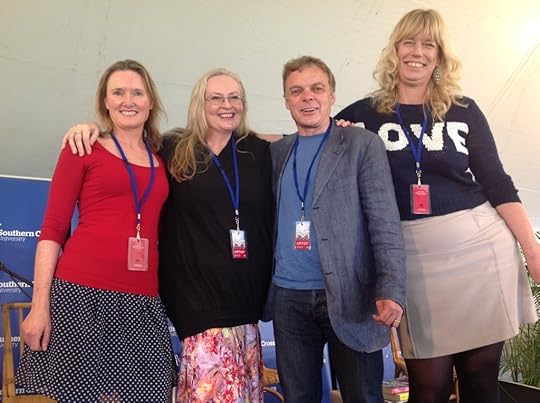 I was privileged to share a panel talking about intimacy with Mary-Lou Stephens, Graeme Simsion and Susanna Freymark. And also a panel called ‘Chick-lit, mass market am I literary enough for you?’ with Anita Heiss, Ed Chatterton, Colin Falconer and Moya Sayer-Jones. We had a lot of fun, as you’ll see on the video. The laughter at the start is for Ed Chatterton’s story about the humiliation of sitting next to Michael Robotham in the signing tent. We writers are sensitive folk.
I was privileged to share a panel talking about intimacy with Mary-Lou Stephens, Graeme Simsion and Susanna Freymark. And also a panel called ‘Chick-lit, mass market am I literary enough for you?’ with Anita Heiss, Ed Chatterton, Colin Falconer and Moya Sayer-Jones. We had a lot of fun, as you’ll see on the video. The laughter at the start is for Ed Chatterton’s story about the humiliation of sitting next to Michael Robotham in the signing tent. We writers are sensitive folk.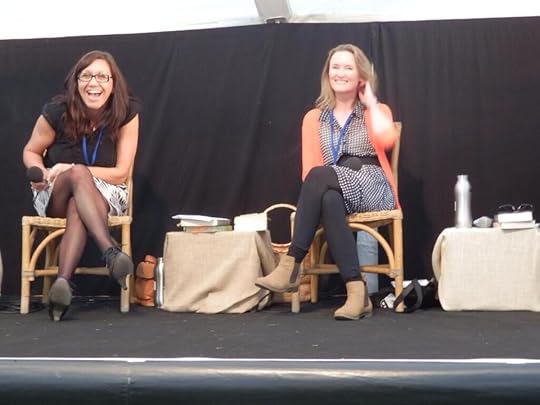
I also loved hosting the Pitch Perfect Panel on Saturday morning, where five emerging writers pitched to some of the finest minds in the Australian publishing industry. I’ll eat my hat (that’s an in-joke for those who were there) if we don’t see at least one of those authors published before too long. I also enjoyed being one of the ‘Hypatia’s Hell Raisers’ in the Stella Prize Trivia night which celebrates Australian Women’s Literature. I now know that Hypatia was the first well documented female philosopher, astronomer and mathematician. I think I only answered one or two questions, but I’m sure I gave the impression it was more, which is absolutely the main thing!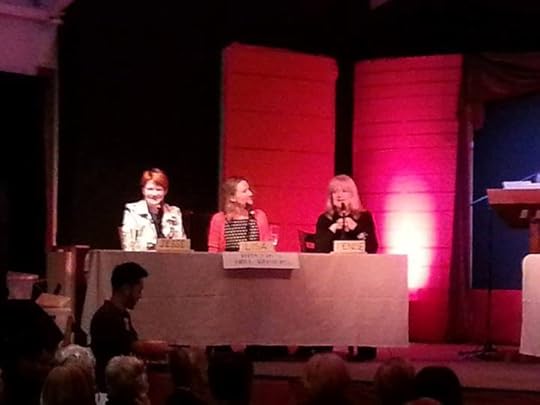
Other highlights included Justin Heazlewood’s striptease and pole dance (see video) and hearing Denise Scott talk about her father dressing up as a clown at her sixteenth birthday party. A surprise favourite was John Elder Robison, who had fantastic photos from the seventies, when he was a roadie with Kiss and Black Sabbath. And there was so much more, but… you’ll just have to watch the video.
I am over in Fremantle next week for the Elizabeth Jolley Conference and will also be at the RWA fancy dress cocktail party on Friday. Fancy dress is not one of my strong points, but I do have a sailor hat. Hope to see you there.


July 18, 2013
Dark Fairy-tales – ‘The Wild Girl’ by Kate Forsyth
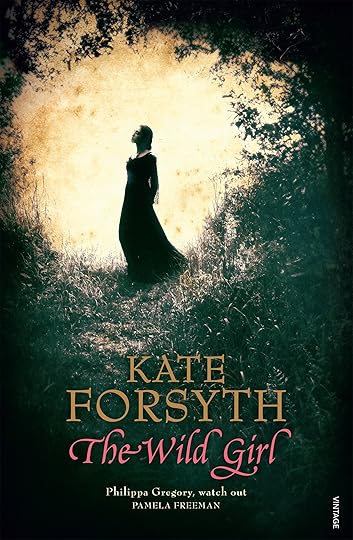 Kate Forsyth has written over twenty books for children, young adults and adults. Her latest novel, ‘The Wild Girl’ is the story of Dortchen Wild, who was the childhood sweetheart and, later, wife of Wilhelm Grimm, one of the Grimm brothers of fairytale fame. Dortchen has been credited as the source of many of the stories in the Grimm brothers’ fairytale book. Forsyth says that she was enchanted to learn that Wilhelm married one of his key storytellers, a girl who grew up next door, and that is when she decided to write Dortchen’s story.
Kate Forsyth has written over twenty books for children, young adults and adults. Her latest novel, ‘The Wild Girl’ is the story of Dortchen Wild, who was the childhood sweetheart and, later, wife of Wilhelm Grimm, one of the Grimm brothers of fairytale fame. Dortchen has been credited as the source of many of the stories in the Grimm brothers’ fairytale book. Forsyth says that she was enchanted to learn that Wilhelm married one of his key storytellers, a girl who grew up next door, and that is when she decided to write Dortchen’s story.
Forsyth has blended the known facts of Dortchen’s life with fiction to produce a compelling tale. Set in Germany during the Napoleonic Wars, The Wild Girl is both a love story and an insight into a tumultuous time in history. Dortchen’s brother Rudolf is sent into Russia as part of Napoleon’s army and few return as winter catches them on their retreat.
While Dortchen is in love with Wilhelm from the moment she meets him as a girl, a happy ending is a long time coming. Dortchen’s tyrant of a father forbids her marriage to a poor scholar with no prospects. The legacy of his treatment of Dortchen lingers after his death, keeping the lovers apart.
Historical fiction is not my usual fare, and I did find the scene setting a little dense first up, but I was soon engrossed. The story is both well researched and skilfully told. Not only a story about fairytales, The Wild Girl is an epic tale of love, loss and families. Scattered with accounts of dark tales like, The Maiden with no Hands, it is no wonder that it gave the author nightmares.
It was interesting to learn how the Grimm’s fairytales evolved from a scholarly recounting to something lighter and more suitable for children. The dark and frightening original stories are echoed in Dortchen’s own life, but Wilhelm’s retelling of the story Many Bits of Fur offers her a gift — a chance to break free of her past.
Forsyth is currently undertaking a doctorate on fairytale retellings. The afterword where she talks about how she came to tell Dortchen’s story after reading a psychological study on the therapeutic uses of fairy tales to help victims of abuse is fascinating. This complex story offers satisfaction on many levels.
This is my 7th review for the Australian Women Writers Challenge.
Not long now until the Byron Bay Writers Festival. The pre-festival workshop program is looking very exciting. I will be running a workshop on the 29 July and will be part of a panel for ‘Nuts and Bolts’ on Thursday 1st August. On Friday 2nd August I will be on a panel called ‘One is the Loneliest Number’ with Susanna Freymark and Graeme Simsion and will be attempting to remember everything I ever knew about Australian Women’s Literature at the Stella Trivia Night. On Saturday, I’m hosting Pitch Perfect and am on a panel with Anita Heiss, Martin (Ed) Chatterton and Colin Falconer. Phew.
On Sunday, I rest. Hope to see you there!


June 30, 2013
Finding joy in simplicity – My review of Mr Wigg
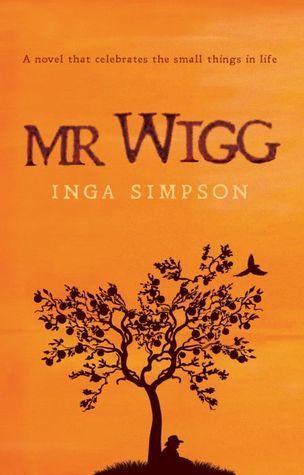 Mr Wigg is an enchanting new novel by Queensland author, Inga Simpson. Set in 1971, the story takes place on Mr Wigg’s farm in South-West NSW. Here he grows a range of stone fruit, listens to the cricket on the radio, bakes with his grandchildren, reminisces about his life and works hard on a secret project.
Mr Wigg is an enchanting new novel by Queensland author, Inga Simpson. Set in 1971, the story takes place on Mr Wigg’s farm in South-West NSW. Here he grows a range of stone fruit, listens to the cricket on the radio, bakes with his grandchildren, reminisces about his life and works hard on a secret project.
‘Mr Wigg had squandered his life’ reads the first line of the book. And for some it might seem so. He has led a quiet life on the farm with his wife, Mrs Wigg, who died a few years ago. He has no great achievements to show for himself, just his orchard and his family. His son thinks it’s time he moved into town.
But Mr Wigg has a special relationship with all the fruit trees in his orchard and each has its own personality and quirky ways. The younger trees, the peaches and nectarines, tend towards silliness, while the older trees are wiser but sometimes impatient. Rhubarb, meanwhile, is characterised by a lack of manners. ‘Rhubarb’s speech was crude, and muted by soil.’
Things even get a bit saucy in spring, when the pears and apples get taunted by the trees which don’t need cross-pollination. ‘His books didn’t have much to say on the sexuality of fruit trees. Mr Wigg figured it was best to keep quiet until the storm of pollen had settled.’ Who knew that life on an orchard could be so intriguing?
Simpson tells us the story of an ordinary man in an extraordinary way, casting a light on the little events that make up a life. Whether it is meeting Mrs Wigg at a dance, making strawberry tarts with the children or telling mythical and magical tales about fruit, each moment is beautifully rendered. The outside world intrudes from time to time; his neighbour’s son is drafted for the Vietnam War and the Springbok’s tour is cancelled after protests.
Mr Wigg is poignant, a little sad, but having the still quality of a meditation. It says on the cover that this is, ‘A novel that celebrates the small, precious things in life.’ And so it does. Quietly contemplative, Mr Wigg is about simplicity; taking joy in the moment and each day as it comes. Turn off the computer and read slowly with a peach to hand.
***********************************************
Inga Simpson will be appearing at the Byron Bay Writers Festival 2-4 August.
This is my sixth review for the Australian Women Writers’ Challenge. On a related note, I have been co-opted onto the panel of the Stella Trivia Night at the Byron Bay Writers Festival where I will be quizzed about my knowledge of Australian Women’s Literature. Scary stuff but should be a fun evening with lots of audience participation.
And for anyone interested in unleashing their inner chick-lit goddess, I’ll be running a half-day workshop on Monday 29 July as part of the Festival. Learn how to find humour in everyday situations, make your dialogue sparkle and give your character’s sex lives a little more sizzle. Come on, you know you want to…
Here’s hoping the rain abates before the marquees go up!


May 30, 2013
Hard to put down – ‘The Husband’s Secret’ by Liane Moriarty
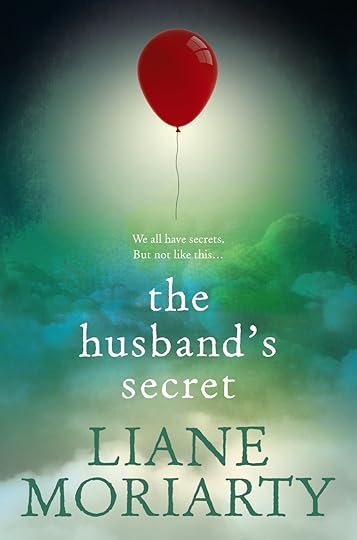 The Husband’s Secret is the fifth novel by bestselling Australian author, Liane Moriarty, but it is the first I have read of hers. The premise is a cracker – what would you do if you discovered a letter from your husband with this written on the front, ‘For my wife, Cecilia Fitzpatrick. To be opened only in the event of my death’? Why, open it at once, of course!
The Husband’s Secret is the fifth novel by bestselling Australian author, Liane Moriarty, but it is the first I have read of hers. The premise is a cracker – what would you do if you discovered a letter from your husband with this written on the front, ‘For my wife, Cecilia Fitzpatrick. To be opened only in the event of my death’? Why, open it at once, of course!
Cecilia, the main protagonist of this story, is the perfect wife – a P and C President and Tupperware party queen who also keeps her sexual techniques up to date. Clearly she is a better person than me, because she does struggle with herself over what to do about the letter, which she discovers while her husband, John-Paul is overseas. But when she asks him about it and senses he is lying, well…
The novel opens with a short excerpt of the story of Pandora, who famously opened a box that would have been better left shut. With this metaphor in mind, clearly Cecilia would have done better to forget about the envelope but of course she can’t. And once the secret is out, the ripples spread.
I read this novel in two sittings and only just restrained myself from staying up all night to finish it. Moriarty interweaves Cecilia’s story with that of the other characters to great effect, so that you just have to turn the page to find out what happens next.
The other major players are Tess, who has come back to Sydney, her home town, because her husband has fallen in love with her best friend and Rachel, an elderly woman who is still mourning the death of her teenage daughter many years before. Rachel’s dead daughter, Janie, also appears as a point-of-view character from time to time.
All of these strands are deftly handled, taking on the terrain of grief, infatuation, love and mid-life crisis in a simply-told but honest and affecting style. Each of the characters grows and learns throughout the novel, coming to grips with their particular problem.
Be warned that the pace of the novel accelerates towards the end, so clear your diary; you won’t be going anywhere until you finish it. ‘The Husband’s Secret’ is a ripping yarn and I’ll certainly be going back for more of Liane Moriarty.
This is my fifth review for the Australian Women Writers Challenge.


May 13, 2013
Cheeky and enlightening – my review of ‘Mullumbimby’ by Melissa Lucashenko
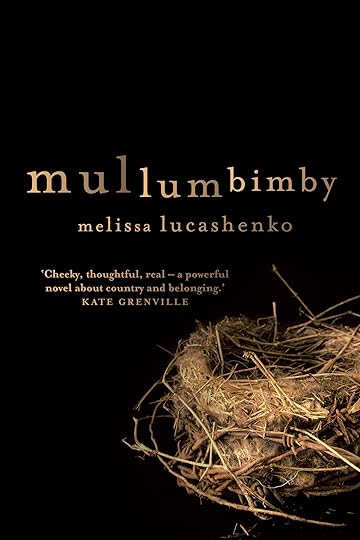 Mullumbimy is Melissa Lucashenko’s fifth novel and is, as the name suggests, set in northern New South Wales. The protagonist, Jo Breen, is an Aboriginal woman who uses her divorce settlement and the money she earns mowing grass at the Mullumbimby cemetery to buy a block of farmland. She sees this as her own way of reclaiming Bundjalung country and the process of returning her land to health is deeply satisfying.
Mullumbimy is Melissa Lucashenko’s fifth novel and is, as the name suggests, set in northern New South Wales. The protagonist, Jo Breen, is an Aboriginal woman who uses her divorce settlement and the money she earns mowing grass at the Mullumbimby cemetery to buy a block of farmland. She sees this as her own way of reclaiming Bundjalung country and the process of returning her land to health is deeply satisfying.
Jo’s life is already complicated by her artistic and moody teenage daughter and becomes more so with the arrival in town of an outsider, Twoboy. Twoboy and his brother are down from Brisbane to initiate a land claim which stirs up a hornet’s nest of conflicting interests in the area. Jo is reluctant to get embroiled in what promises to be a messy fight. Twoboy, however, is dreadlocked, devastatingly handsome, heterosexual and apparently single. This is practically a miracle as far as Jo is concerned.
Jo also has to come to terms with her new neighbours, including the farmer Rob Starr, who wears expensive boots and erects fences where none seem needed and Granny Narrung, an Aboriginal Elder who Jo initially dismisses for her old-fashioned and uptight Christian ways.
The book is full of cheeky humour and witticisms, such as when Jo first sights Twoboy coming out of a bookshop and immediately wants to rush in and find out what he bought, ‘… hoping – please, oh please – that it wasn’t Armistead Maupin.’
I enjoyed the way Lucashenko used Bundjalung words throughout the novel. This added richness to the story and a glossary at the back provides a handy reference. Jo is troubled by how little she knows about the spirituality of Bundjalung culture and is wary of the looming peak of Wollumbin. ‘She knew Wollumbin was strong men’s business, and to be avoided at all costs.’ The difficulty of maintaining Bundjalung culture and links to land is an ongoing theme throughout the book. The fraught issue of native title is also handled with honesty and insight.
This book can be enjoyed simply as a well-told yarn, but particularly for those of us who live in this area, it is so much more. Mullumbimby offers a window into the living Bundjalung culture and the meaning of the Country which I found both moving and enlightening. It is also a page turner – highly recommended.
This is my fourth review for the Australian Women Writers Challenge.
Literati on the Gold Coast is on this Friday and Saturday! I will be talking about ‘Character Care and Maintenance’ on Friday with Jessie Cole and Paula Weston and on Saturday I join a lovely cast of romance writers – Helene Young, Anna Campbell and Keri Arthur on ‘A Course of True Love’. If you’re in the area, I’d love to see you.





